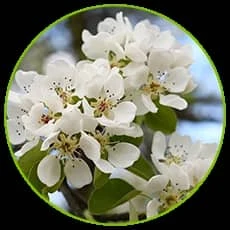Nov . 25, 2024 02:13 Back to list
Guidelines for Cherry Pollen Germination Processes and Techniques
Protocol for Cherry Pollen Germination A Comprehensive Guide
Cherry trees, belonging to the genus Prunus, are renowned for their beautiful blossoms and delicious fruits. Understanding how cherry pollen germinates is crucial for both horticulturists and researchers, as it plays a vital role in fruit production and breeding programs. This article outlines an effective protocol for cherry pollen germination, detailing the essential components, procedures, and important considerations to ensure successful outcomes.
Importance of Pollen Germination
Pollen germination is a crucial step in the fertilization process of plants. In cherry trees, successful pollen germination leads to fruit development and is influenced by various environmental factors. By studying the germination process, researchers can gain insights into plant reproduction, improve breeding techniques, and enhance fruit yield.
Materials Required
1. Cherry Pollen Fresh pollen collected from mature cherry flowers. Pollen should be harvested during the peak flowering period to ensure viability. 2. Petri Dishes Sterilized Petri dishes to culture the pollen. 3. Germination Medium A suitable medium for pollen germination, typically comprising - Sucrose solution (10-20%) Provides the necessary carbohydrates for growth. - Boric acid (0.01%) Enhances germination rates. - Calcium nitrate (0.1%) Aids in the development of pollen tubes. 4. Distilled Water For preparing the germination medium. 5. Microscope For observing pollen grains and germination rates. 6. Incubator To maintain controlled temperature and humidity levels during the germination process.
Procedure
1. Pollen Collection Carefully collect cherry pollen from fully opened flowers. Ensure that the pollen is dry and avoid contamination by environmental debris. Store the pollen in a cool, dry place until use.
protocol for cherry pollen germination service

2. Preparation of Germination Medium In a clean laboratory environment, prepare the germination medium by mixing sucrose, boric acid, and calcium nitrate in distilled water. Ensure that the medium is well-mixed and dissolved completely.
3. Inoculation - Pour the prepared germination medium into sterilized Petri dishes, covering the bottom with a thin layer (approximately 5-10 mm). - Using a sterile spatula or pipette, gently sprinkle a small quantity of cherry pollen onto the surface of the medium. Avoid overcrowding, as this can hinder germination.
4. Incubation - Place the Petri dishes in an incubator set at an optimal temperature, typically around 25°C with high humidity levels (approximately 80-90%). These conditions mimic the natural environment necessary for pollen germination. - Maintain the dishes in the incubator for 24 to 48 hours, checking for moisture levels regularly to prevent desiccation.
5. Observation After the incubation period, examine the Petri dishes under a microscope. Count the number of pollen grains that have germinated and the length of the pollen tubes formed. Document these findings for further analysis.
Important Considerations
- Pollen Viability The success of germination is highly influenced by the viability of the collected pollen. Freshly collected pollen is more likely to germinate than older, stored samples. - Environmental Factors Temperature and humidity play critical roles in pollen germination. Adjust the incubator settings as necessary to maintain optimal conditions. - Contamination Prevention Ensure that all equipment is sterilized to avoid microbial contamination, which can negatively affect germination rates.
Conclusion
The protocol outlined above serves as a valuable guideline for researchers and horticulturists interested in cherry pollen germination. By meticulously following these steps and ensuring optimal conditions, one can significantly enhance the success rate of pollen germination. Understanding this process not only contributes to improved fruit production but also offers insights into the reproductive strategies of cherry trees, aiding in the conservation and cultivation of these beloved plants. As research continues, further adaptations of this protocol may lead to more efficient methods of fostering successful fertilization in cherry and other related species.
-
Premium Cherry Pollen for Pure Pollination & Different Types
NewsJul.30,2025
-
Artificial Pollination Solutions for Various Plant Pollen Types
NewsJul.29,2025
-
Artificial Pollination Solutions for All Plant Pollen Types
NewsJul.29,2025
-
Premium Plant Pollen for Pure Pollination & Pollen Block Solutions
NewsJul.29,2025
-
Artificial Pollination Solutions for Efficient Crop Yields
NewsJul.28,2025
-
Premium Cherry Pollen for Pure Pollination & Different Types of Pollen
NewsJul.28,2025